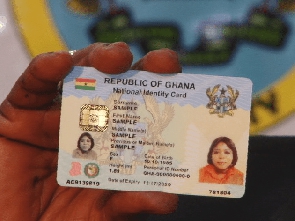- Home - News
- TWI News | TV
- Polls
- Year In Review
- News Archive
- Crime & Punishment
- Politics
- Regional
- Editorial
- Health
- Ghanaians Abroad
- Tabloid
- Africa
- Religion
- Election 2020
- Coronavirus
- News Videos | TV
- Photo Archives
- News Headlines
- Press Release
General News of Saturday, 11 November 2006
Source: --
Human Dev't Report: Poor Pay More For Water in Ghana
Summary of Water Situation in Ghana
- In Accra, Ghana, [water] connection rates average 90% in high-income areas and 16% in low-income settlements. People in Adenta and Madina, sprawling slum areas in the southeast part of the city, buy their water from intermediaries served by tanker truck associations, which in turn purchase in bulk from the water utility. The upshot: many of the 800,000 people living at or below the poverty line in Accra pay 10 times more for their water than residents in highincome areas. To add insult to injury, the volume of water available for users in slums is often reduced because of overconsumption by households in high-income areas.
Water provided to slums in cities such as Accra is reduced during periods of shortage to maintain flows to high-income areas, where provision amounts to more than 1,000 cubic litres per person a day.
- Ghana will need to increase the rate at which coverage is increasing for water and sanitation by a factor of 9.
- In 2004 Ghana and Tunisia both received $88 in aid for every person without access to an improved water source; Burkina Faso and Mozambique received $2 per person. South Africa received $11; Chad and Nigeria received between $3 and $4. Aid pessimists question the role of development assistance in fostering human development. That pessimism is unfounded. International development assistance has been pivotal in supporting progress in access to water in countries such as Ghana, South Africa and Uganda—and it continues to support progress towards sanitation for all in Bangladesh and Lesotho.
- In the Ghanaian capital, Accra, and in Guayaquil, Ecuador, large water tanker fleets set off every morning for low-income settlements, where they sell to households and intermediaries.
- Ghana adopted a new water law in 2005 that commits the government to expand the role of private operators in delivering services through management contracts. As part of the policy reform, a private operator was selected in late 2005 for a five-year management contract covering Accra and other major towns. Because of a combination of underfinancing, inefficiency and inequitable pricing the publicly owned utility, the Ghana Water Company, had been failing to provide water to urban areas throughout the country, and management contracts are now seen as part of the solution. Will the new arrangement deliver? Some of the targets set are encouraging. For Accra they include establishing 50,000 new household connections and restoring regular water supply to existing customers. The programme also envisages the creation of 350 public standpipes a year for unserved urban areas.33 Outcomes will depend on the clarity of contracts and on regulation. One concern is the inadequacy of financing and delivery strategies for reaching the poorest households. Moreover, details about pricing for standpipes and the targeting of poor areas remain vague.
- The decentralization of rural water supply in Ghana is a demand-responsive approach that is working
Ghana’s rural water supply—a participative approach that works
In little more than a decade Ghana transformed the structure for rural water supply, expanding coverage through more participative— and more efficient—delivery systems. The change has been dramatic. At the start of the 1990s rural water supply was managed through the Ghana Water and Sewerage Corporation, a public utility responsible for planning, building and maintaining rural water supplies. Boreholes drilled in Ghana were among the most costly in the world, and as few as 40% of handpumps were working at any one time because of poor maintenance. Access to water is now being extended to about 200,000 more people each year. Coverage has increased from 55% in 1990 to 75% in 2004, with rural areas figuring prominently. Ghana achieved this progress through sweeping reform of a system that was topdown, unresponsive and not delivering. Responsibility for rural water supplies was transferred to local governments and rural communities. Authority for coordinating and facilitating the national strategy for community-managed water and sanitation was transferred to the Community Water and Sanitation Agency—a highly decentralized body with multidisciplinary staff in 10 regions of the country. The regional teams provide direct support to district assemblies in planning and managing safe water and sanitation services.New political structures for water governance have been developed as part of a broader decentralization programme. District assemblies, an important tier of elected local government, are responsible for processing and prioritizing community applications for water supplies, awarding contracts for hand-dug wells and latrine construction and running a latrine subsidy programme. They also provide 5% of the capital costs of water facilities. Village structures are part of the new system. To apply for capital grants, communities have to form village water committees and draw up plans detailing how they will manage their systems, contribute the cash equivalent of 5% of the capital costs and meet maintenance costs. An assessment in 2000 identified major improvements:
- More than 90% of people were satisfied with the location, quantity and quality of the water.
- The overwhelming majority of people had contributed to the capital costs, with 85% also paying towards operation and maintenance costs. Most believed that the principle of payment was fair and intended to continue paying
- More than 90% of water and sanitation committees had received training, opened bank accounts and held regular meetings. Women played active and influential roles on these committees.
- Another problem is the fragmentation of authority. In Ghana roles and responsibilities for water are well defined within a national planning framework. That is not the case for sanitation, where authority is divided among the Ministry for Water Resources, Works and Housing and a range of other line ministries.
- In Ghana farmers around Kumasi use wastewater on 12,000 hectares, more than twice the area covered by formal irrigation systems across the whole country. It is estimated that dry season irrigation with wastewater raises average agricultural incomes in Kumasi by 40%–50%, with the predictability of supply and the high nutrient content of the wastewater enabling farmers to enter higher value-added vegetable markets.
- Countries such as Ghana and Zambia have very high levels of water storage per capita—higher, in fact, than the United States—but a limited capacity to mitigate risk.
Life expectancy
Over the past three decades developing countries as a group have been converging on developed countries in life expectancy. Their average life expectancy at birth has increased by nine years, compared with seven in high-income countries. The exception again is Sub- Saharan Africa. For the region as a whole life expectancy today is lower than it was three decades ago—and even this headline story understates the problem.- Current evidence does not point to systematic bias in [HIV/AIDS] treatment. In Ethiopia and Ghana women account for a smaller share of treatment than predicted on the basis of infection rates, but in South Africa and Tanzania they account for a larger share.
- Full report










